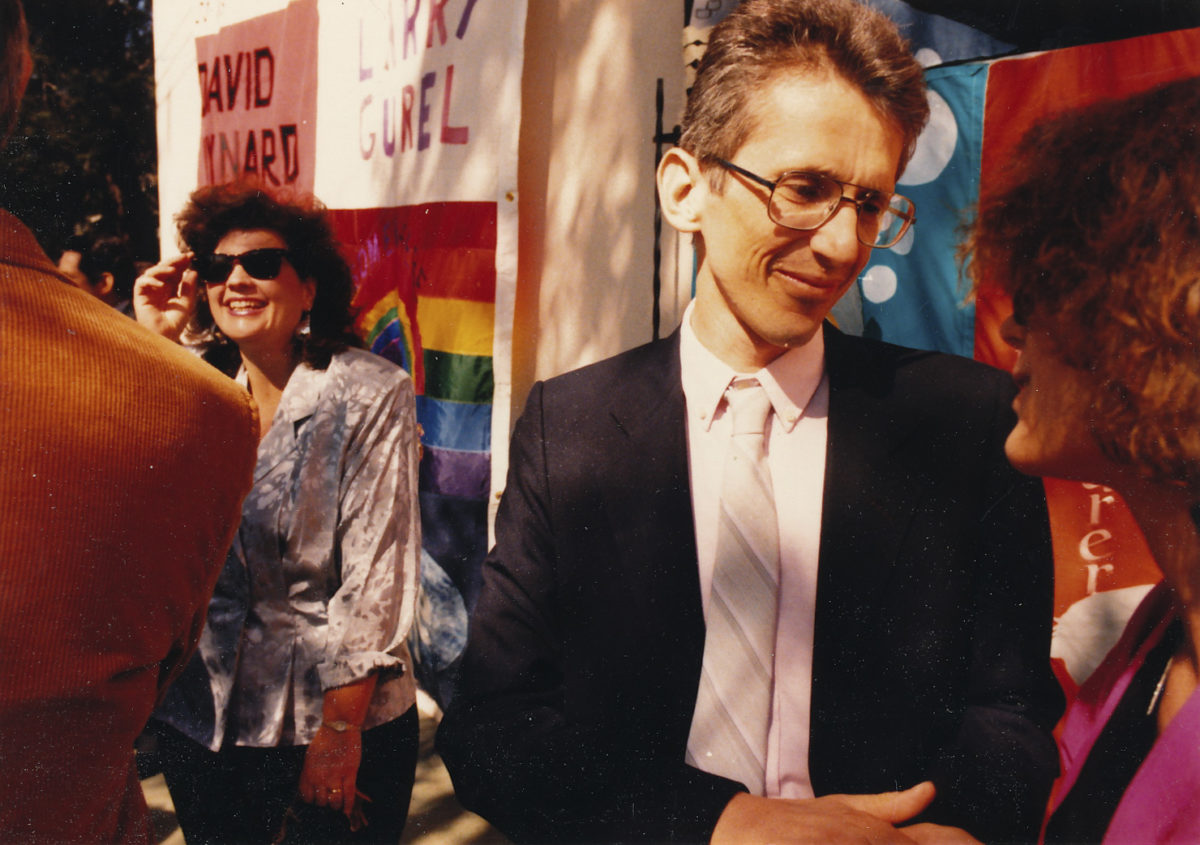Los Angeles Archivists Collection | By Hilary Clifford
Hospitals were not equipped to handle the AIDS crisis, and service for those dying of the disease was extremely limited. People were dying on the streets with no one to care for them.
Hospitals were not equipped to handle the AIDS crisis, and service for those dying of the disease was extremely limited. People were dying on the streets with no one to care for them.
In December of 1988, the AIDS Healthcare Foundation transformed the nursing quarters of the old Barlow Hospital in Elysian Park into the Chris Brownlie Hospice, a hospice dedicated to providing care for those dying of AIDS in order to give them a dignified death. The hospice could house 25 patients during the last few months of their lives. The goal was to bring warmth and joy into the remainder of these people’s lives and make them feel like family and cared for in the best way possible. A tree could be planted on the grounds by family or friends in honor of their deceased loved one. When the hospice closed in 1996 due to the increased availability of antiretroviral drugs used to treat the disease, it had housed around 1,200 patients. It was the first hospice in LA County that cared for AIDS patients.
The hospice was named after co-founder of the AIDS Healthcare Foundation and prominent activist Chris Brownlie. Brownlie died of AIDS on November 28th, 1989, at the age of 39. He took a room in the hospice named in his honor but returned to his own apartment the day before he passed.
This collection consists of intimate photos of patients as well as employees of the AIDS Hospice Foundation (now the AIDS Healthcare Foundation), documents including “On Angels’ Wings” (the newsletter of the hospice), and videos including public service announcements and telethon recordings.
Preserving this unique collection has been eye-opening. By diving into the 30-year history of the AIDS Healthcare Foundation, I have been able to trace the changes from the necessary beginnings of the AIDS Hospice Foundation to what it is today: a non-profit dedicated to providing affordable treatment to those with HIV/AIDS. Compassion emanates from this collection, displaying the desperate need for humanization of those afflicted with AIDS in the late 80s and how the then AIDS Hospice Foundation rose to that occasion. Starting with 25 patients in care, AHF had the original goal of getting 100,000 people suffering from HIV/AIDS into care. By 2015, AHF had half a million people in care. We are projected to hit our 1 million people in care mark by October, 2018.

